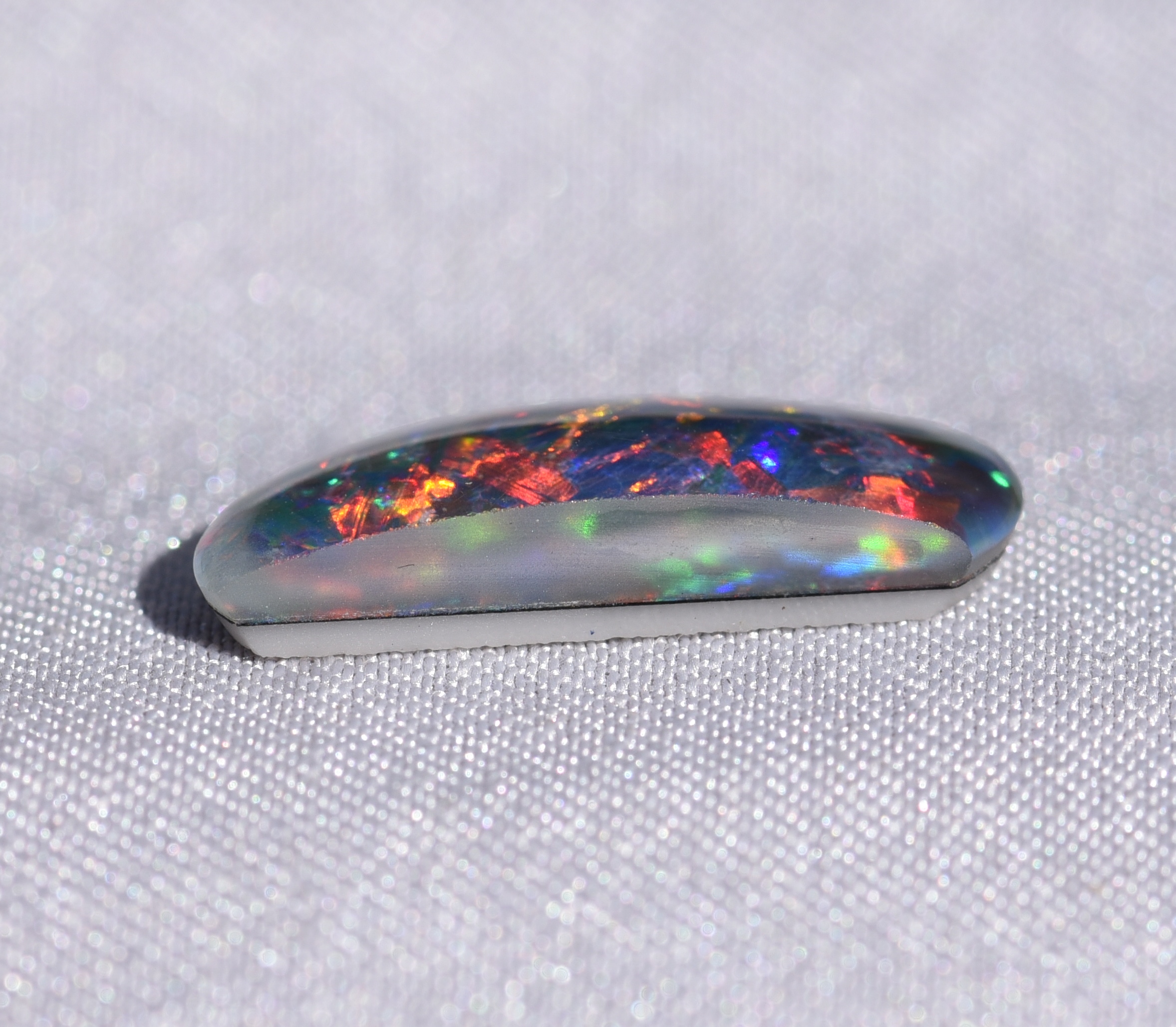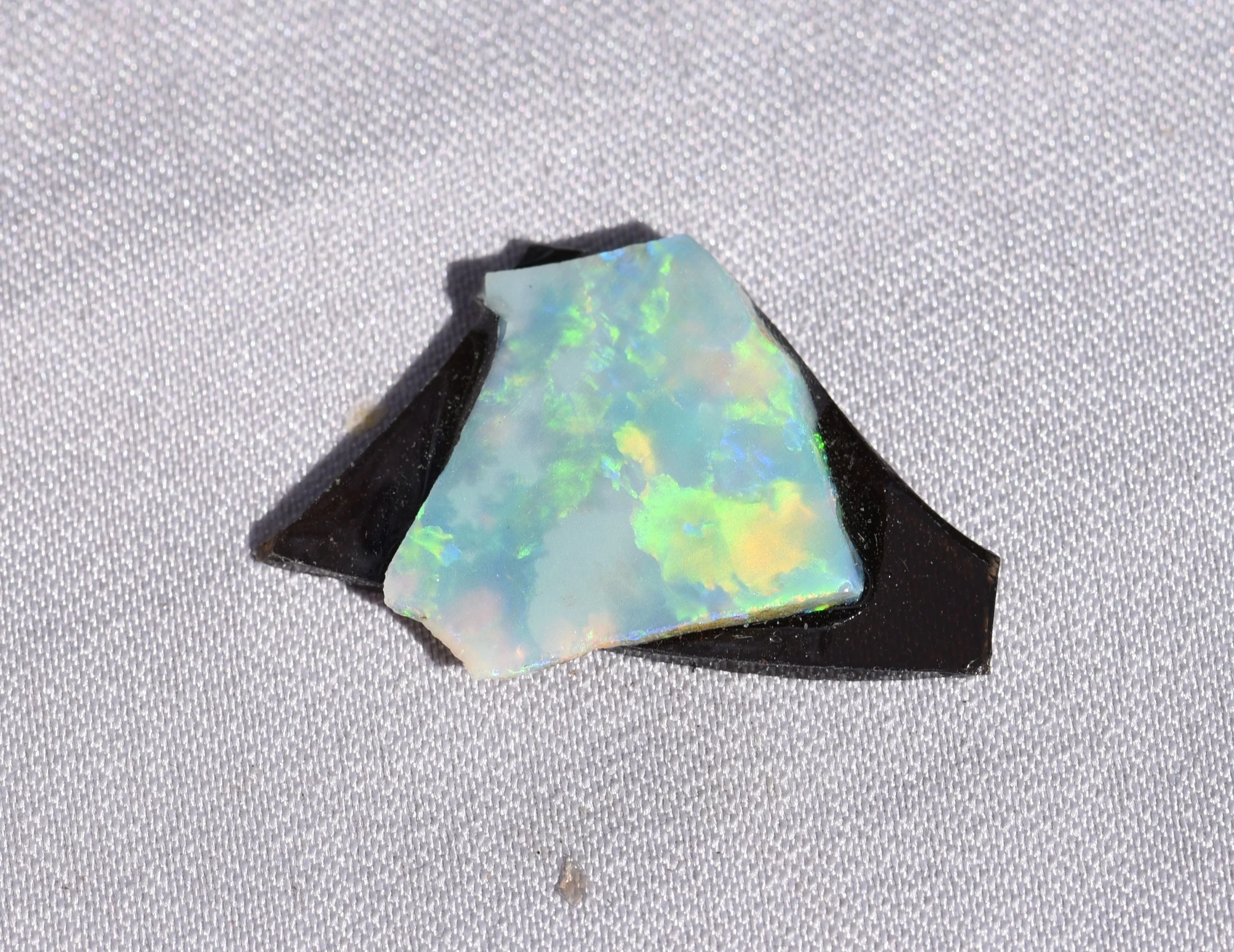Sue has provided Opal Academy with numerous photographs as well as many discussions over time regarding opal patterns and opal valuation and descriptions. The frontispiece photo in the home page of Opal Academy are the “Cathedral Doors” an amazing ‘split pair’ of boulder opal. As well as other photos of exquisite opal.
Read MoreI was introduced to Joe during the time of writing the Opal Nomenclature. Joe is a past President of the Lightning Ridge Miners Association and the convener of the Lightning Ridge Opal Advisory Service. Joe’s assistance to Opal Academy has been many years of discussion and advice on types, values descriptions of Lightning Ridge Opal. Also discussions on opal mining and a miners view of formation with many discussions underground in the opal fields.
Read MorePeter may well be the person who started this whole website happening. Peters desire to have his family history in the opal industry preserved on the web has goaded, insisted, and otherwise pushed me to work digitally on opal education. His friendship and his father Greg Sherman’s assistance or persistence in all things opal has been invaluable to this project.
Read MoreThe study of opal gemmology follows the normal procedures of non-destructive gemmological testing. These procedures examine the observable qualities of gemstones which include the physical or mineralogical properties of opal and more particularly measurable observations of refractive index (RI), Specific Gravity (SG), examination under exposure of excitation Ultraviolet light, and Microscopic examinations of opal characteristics such as imperfections and inclusions. Advanced material science methods of examinations for gemmological purposes is also beginning to become a necessity for the modern gemologist
Read MoreBy Gemmological definition, a natural opal is an opal that has been mined or found and comes out of the ground, from a natural environment. At present there are two geological variations of Natural Opals. (See discussion of Geological Occurrences). We have natural opals that occur in or are associated with rocks that are of a sedimentary origin, and natural opals that occur or are associated with rocks of a volcanic origin. This distinction is difficult and eventually Scientific investigations will become much more definitive. However for now these two ‘environments’ provide us with a suitable distinction.
Read MoreThe item is owned by a colleague Suzanne White and while there are perhaps records of major named precious Australian opals recorded in history, more modern, or more recent items seem not to have been well highlighted.
Read MoreTintenbar is the geographical name given to an area in north eastern NSW that encompasses a number of opal discoveries and opal fields within the surrounding areas. Tintenbar is essentially the only area that has produced commercial quantities of precious opal from a so called “volcanic geological environment”.
Read MoreThe first attempt at manufacturing synthetic opal was made soon after the determination of the structure of opal in 1964 Sanders. Details of the procedure used to first synthesise opal are preserved in the original patent documents registered by the CSIRO in Australia, Great Britain and the USA during 1964. The original patents for the synthesis procedure were finally accepted some seven years later, on October 11th 1971.
Read MoreThe classification of opal has always presented difficulties and many different names have been given to opals. Broadly speaking opal types have often been named by:-
Read MoreNatural Opal (Type 1) or Type 1A, Natural Hydrophane opal (Type 1B) or Type 4, Natural Boulder opal (Type 2), Natural Matrix opal (Type 3)
Read MoreThere are two ways of describing opal types by way of its geological formation. The first method has always been to describe opal by the name of the rock type that the opal is associated with. By this method we distinguish two and potentially three types of opal. They are “Volcanic opals”, and “Sedimentary opals” and are typically used in different types of literature. The third type of opal then is “Metamorphic opal”. This classification of opal can be misleading when it is used to discuss opal, as it is impossible for opal to survive in the volcanic geological environment.
Read MoreThe original types of opal for the mineralogical classification that are found in most textbooks contain a combination of some of the terms already discussed above as well as some terms descriptive of the phenomena seen in different opals such as sheen (girasol opal) or inclusion (moss opal). However with the discovery of the structure of opals in 1965 at the CSIRO, Segnit et al proposed a new mineralogical nomenclature in which types of opal are based on the opal structure as revealed by X-Ray diffraction techniques.
Read MoreTriplet opals then are an artificial opal that is constructed from three pieces, in someways a triplet opal is just a doublet opal that has had another piece of material adhered to the top. So to create a Triplet opal all you need to do is adhere a clear or transparent material to over the top of the “opal” layer! As with the black material used as the base of a doublet opal, the clear layer over the top can be any material that is clear and transparent. Again it may be glass, plastic or anything else.
Read MoreDoublet opals come in two basic forms, a doublet of two pieces to imitate a black opal, or a doublet of two pieces to imitate a boulder opal. In the case of a doublet imitating “Black opal” the doublet usually consists of a thin laminate of “opal” glued or adhered to a black substrate of some material (the substrate can be be anything that is black, a few examples may be black potch opal, or black glass, or something painted black), anything black will do!
Read MoreOpal is a mineral that belongs to a large group of minerals known as the “Silica family”. Silica, known by its chemical formula as “SiO2”, is a mineral compound of two atoms; Silicon and Oxygen. The most common forms of Silica in our environment are crystals of Quartz, or sand, and also window glass. Opal is unique however as it also has in its formula a component of water or ‘H2O’. The complete formula for opal is SiO2,nH2O. When we look at the letter ‘n’ in the formula it relates to “how much” water is in the Opal.
Read MoreNumerous texts state that the derivation of the word “Opal” comes from the Sanskrit word “upala” although this appears to be the general name given for “precious stones” (Skertchley).
In Greek language, in the first century before Christ, the gemstone was known as “opallios”.
Read MoreOpal is known worldwide as Australia’s National Gemstone and this is because Australian Opal fields produce commercially the highest quality, and most valuable precious Opal gemstones compared with any other source in the world. Without a doubt, the most striking thing about an Opal is it’s distinctive ‘play of colour’. It’s ability to diffract light results in rainbow like colours from every angle.
Read MoreEstablished in 1896 by Ernest Gregory Sherman (Ernie), Sherman Opals have been wholesaling and exporting Australian opals for well over 108 years. The Sherman family has been at the helm of the Company all this time, building an indisputable reputation for quality and price.
Read MoreIt has been published that the earliest references to opal are regarding a supposed discovery in Kenya Africa, by the renowned archaeologist Dr Louis Leakey in 1939. Dr Leakey reputedly discovered opal artefacts buried in the “Nakuru” cave which have been dated by modern scientific methods to an age of approximately 4000 BC. Since this time, it has been reported that this reported discovery of opal has been determined not to be opal.
Read More



















